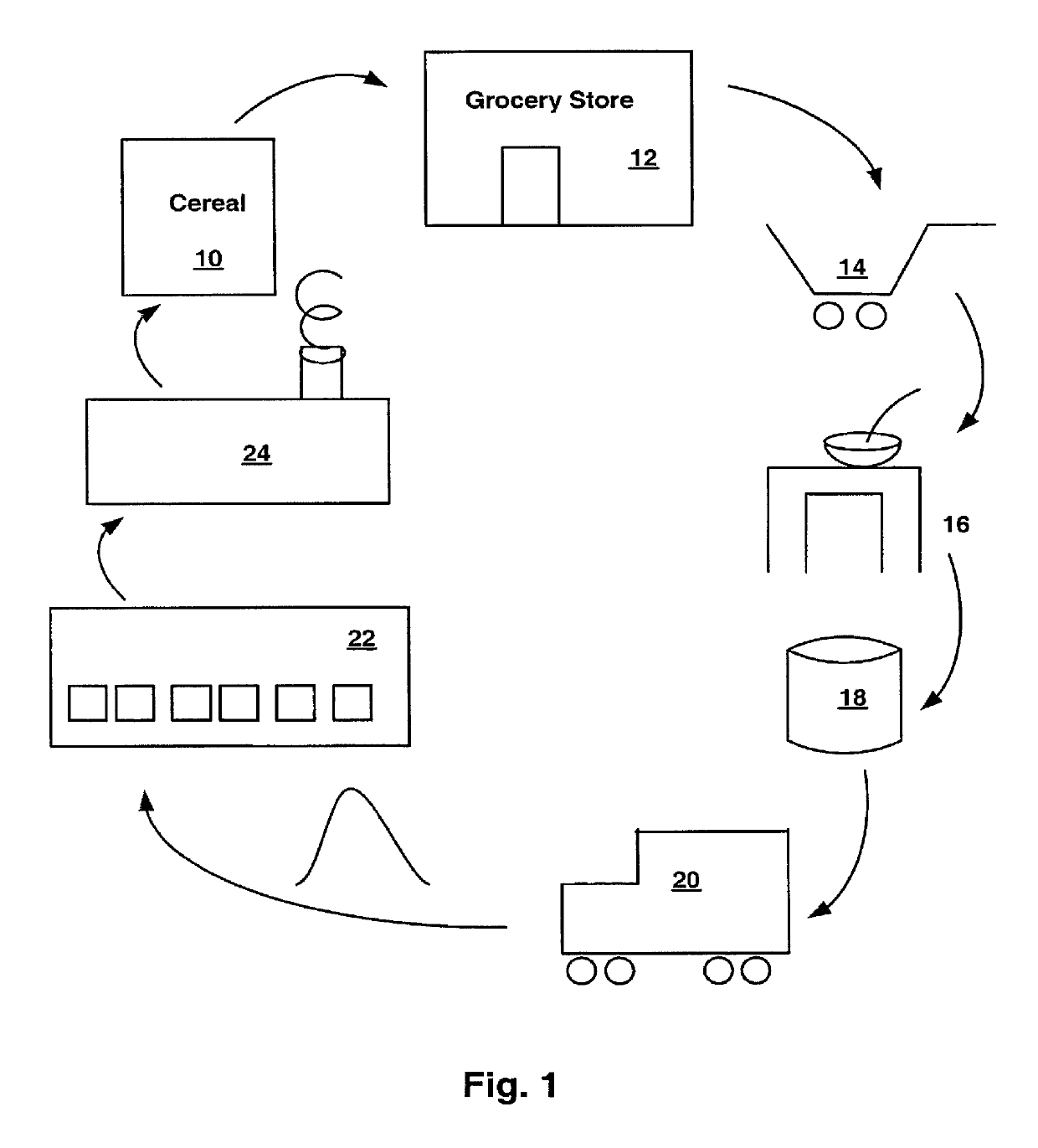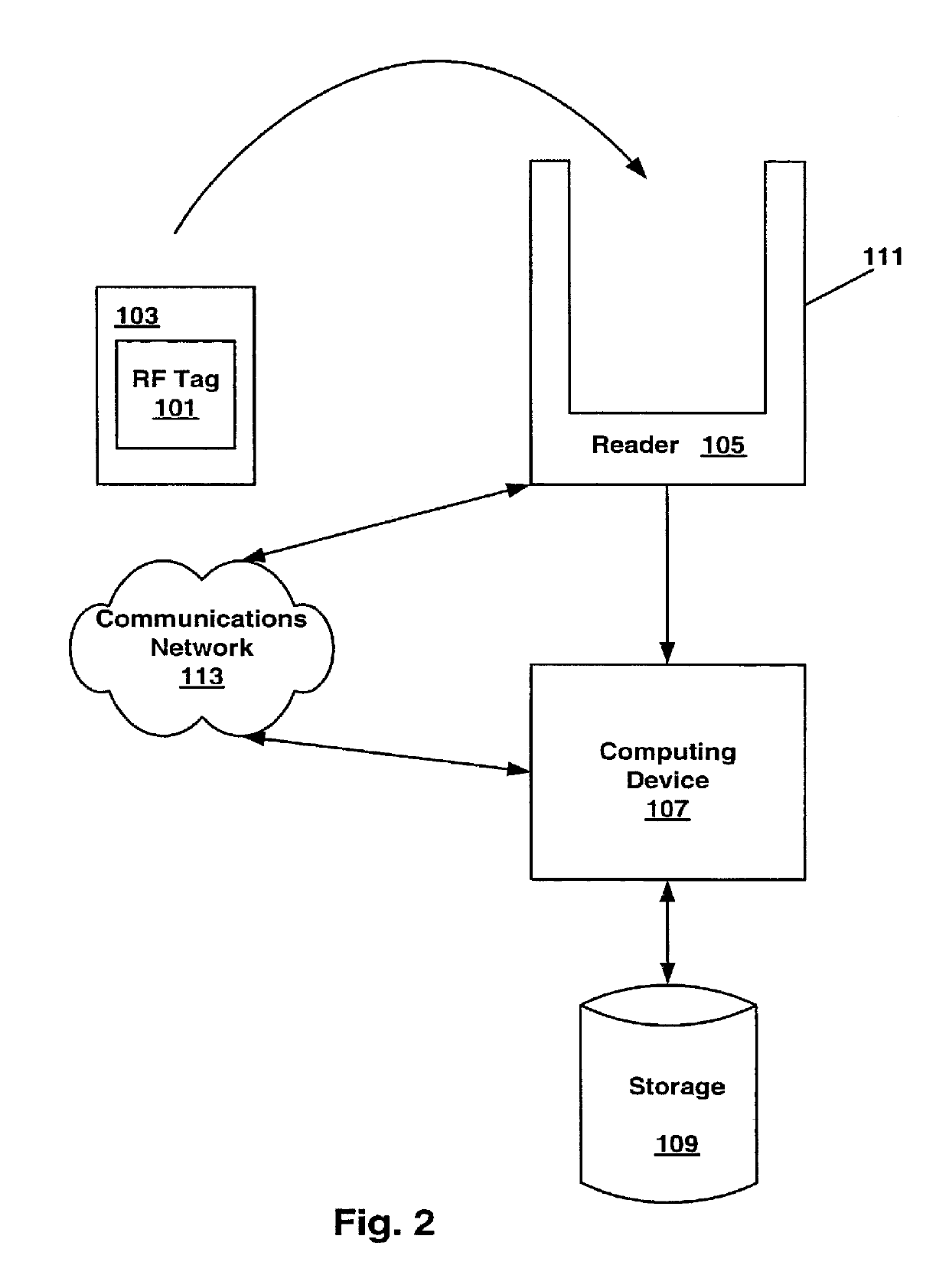Radio-frequency tags for sorting post-consumption items
a radio frequency tag and post-consumption technology, applied in the field of post-consumer resource management, can solve the problems of leaving behind some kind of waste, process error prone, lack of time or the inclination,
- Summary
- Abstract
- Description
- Claims
- Application Information
AI Technical Summary
Benefits of technology
Problems solved by technology
Method used
Image
Examples
Embodiment Construction
Life Cycle of a Recycled Item
[0020]FIG. 1 illustrates an exemplary life cycle of an article that is recycled or processed. An item (e.g., a box to be filled with cereal) 10 is produced by a manufacturer 24, filled with cereal by the same or another manufacturer and is transported to a retail establishment such as a grocery store 12 for sale. A consumer may purchase 14 the item, consume or use it 16, and throw the item or the empty container in the garbage, trash or recycling 18. A waste management or recycling service 20 may collect the item and transport the item to a recycling, processing or disposal facility 22, or the like. Facility 22 may process the item so that the useful components of the item (e.g., paper) can be re-used at a manufacturer 24 to produce a new item (e.g., another cereal box to be filled with cereal).
RF Tag Post-Consumption Data Acquisition
[0021]Each post-consumption item may have a radio-frequency (RF) tag associated with it, thereby allowing more intelligent...
PUM
 Login to View More
Login to View More Abstract
Description
Claims
Application Information
 Login to View More
Login to View More - R&D
- Intellectual Property
- Life Sciences
- Materials
- Tech Scout
- Unparalleled Data Quality
- Higher Quality Content
- 60% Fewer Hallucinations
Browse by: Latest US Patents, China's latest patents, Technical Efficacy Thesaurus, Application Domain, Technology Topic, Popular Technical Reports.
© 2025 PatSnap. All rights reserved.Legal|Privacy policy|Modern Slavery Act Transparency Statement|Sitemap|About US| Contact US: help@patsnap.com



